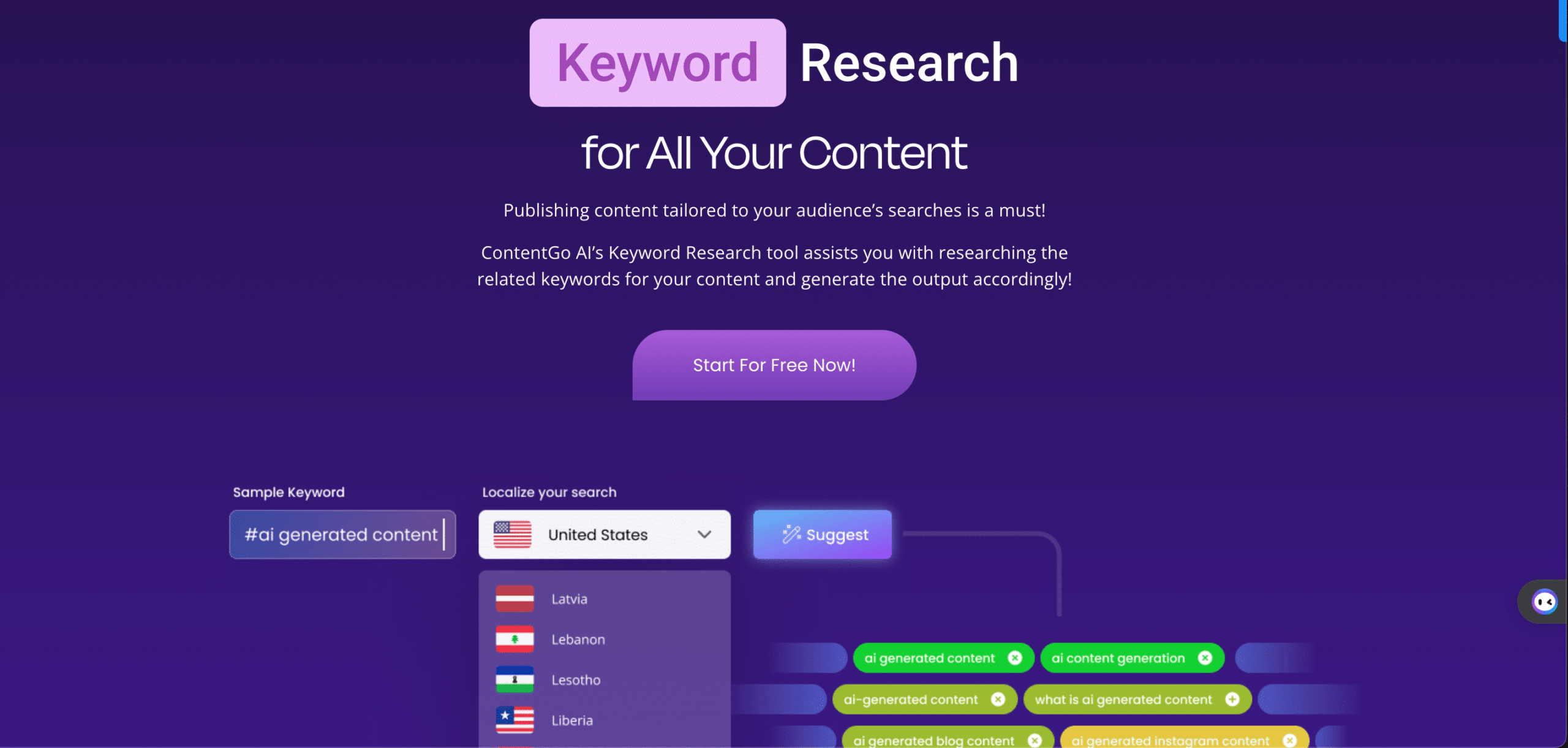Deciphering the hidden code behind every search query can seem like trying to find a needle in a haystack. But for businesses and content creators, understanding search intent is like holding a treasure map where X marks the spot.
So, what exactly is search intent? It’s the purpose behind every search someone performs on search engines. By wrapping our heads around the concept, we can create more impactful content that aligns with our audience’s desires.
This definitive guide will walk you through the nuances of search intent, why it’s critical for your online strategy, and how you can harness it to connect with your audience more effectively.
Understanding the Four Pillars of Search Intent
Search intent can be broadly categorized into four buckets: informational, navigational, commercial, and transactional.
Informational searches are fueled by a thirst for knowledge, with the user intent keyword being to learn or understand. These searchers are on a quest for answers, and providing them with the desired information means you have successfully aided in their pursuit of knowledge. It’s the purest form of providing value through content.
Navigational search intent is all about finding a specific destination on the immense sea on the internet. Users know where they want to dock their digital ship – they are just looking for the quickest route there. For businesses, ranking for navigational keywords means you’ve made the journey for your users as smooth as possible, directly leading them to your shores.
The commercial intent carries the scent of a forthcoming decision. Users are in the market intending to buy but are sniffing around for the best options before committing. Here, your job is to provide content that satisfies this research phase, often by comparing products, highlighting features, or showcasing testimonials.
Transactional intent, on the other hand, signifies that the searcher’s credit card is out, and they’re ready to transact. They’ve done their research and are in the critical stage of conversion. Your content should make this process as seamless as possible, with clear calls to action and an easy path to purchase.
You can tailor your content to serve each user’s needs by identifying the search intent. From an informative blog post that answers a burning question to a product page that makes purchasing a breeze, aligning with user intent is the name of the game.
And while each type of search intent is distinct, they often blend, creating a spectrum rather than rigid categories. A user might start with an informational search and, as they gather knowledge, move towards a transactional intent. Your content needs to guide them along this journey with ease.

Decoding Informational Searches
When users initiate an informative search, they seek to expand their understanding of a topic, solve problems, or satisfy curiosity. They’re still looking to buy; they’re information seekers hungry for enlightening and educating content. This is where blog posts, tutorials, and explanatory videos come into play.
As a content creator, you should aim to answer questions comprehensively. Think of yourself as a friendly guide, offering a beacon of knowledge in what can be an overwhelming sea of information. Approaching content creation with the intent to educate is essential when targeting informational searches.
Include keywords that signal a search for knowledge, such as ‘how to,’ ‘ways to,’ ‘guide,’ or explicit question phrases that begin with who, what, where, when, why, or how. These markers help search engines understand that your content aims to inform and is crucial for ranking effectively.
Not only should your content be informative, but it should also be engaging. Use real-life examples, analogies, and straightforward explanations to break down complex subjects. The more relatable and digestible the information, the more likely users will stay on your page to absorb it.
Timing is also vital in informational searches. Often, users are seeking the most up-to-date information. Ensure your content is regularly updated and reflects the latest trends or data. This boosts your credibility and ensures better visibility in search results.
Informational search intent is an excellent opportunity for you to establish thought leadership. You become a trusted source by providing valuable insights, leading to repeat visits and heightened brand recognition. Embrace the educator role, and your content will surely reap the rewards.
Navigation: The Direct Path
Navigational search queries are the GPS directions of the internet. Users already have a destination—perhaps a brand or a specific service—in mind, and they’re using search engines to guide them there. You aim to ensure your brand or service comes up top when users search directly for it.
To capture navigational intent, your website must be optimized for brand-related searches. This means clarity in your site’s structure, meta titles, and descriptions, all of which signpost your brand’s homepage or key landing pages as the go-to destination for users.
Consider the user experience in navigational search intent. If a user is looking for your ‘Contact’ page, they want to find it with zero hassle. Navigational pages should be intuitive to find and access, with clear labels and a straightforward navigation bar.
Including the name of your brand or product in critical areas of your website, such as the header, footer, or within your content, is crucial for search engines to recognize and serve up your site as the answer to navigational searches.
Users won’t need to click through multiple pages if your content aligns with navigational intent. They’ll land where they wish to be, satisfying their search quickly and efficiently—the hallmark of excellent user experience.
Remember, the simplicity of navigation can lead to a higher trust in your brand. If users find what they need without frustration, their overall perception of your brand improves, potentially leading to increased loyalty and advocacy.
The Intersection of Search and Commerce
Dealing with commercial search intent is like being midway between a user’s curiosity and their purchase commitment. They’re exploring their options, weighing the pros and cons, and looking for reasons to choose one product or service over another.
Your content plays a crucial role in this decision-making process. It should bridge the gap between information and persuasion, providing in-depth comparisons, reviews, and buyer guides that lead users to informed decisions.
Commercial intent content should also be optimized with keywords that indicate comparison and intent to buy soon. Phrases like ‘best of,’ ‘top 10,’ or ‘review’ signal this type of content, allowing you to target users in the consideration phase directly.
Showcasing testimonials, expert endorsements, and ratings within your content can significantly influence users with commercial intent. They’re looking for social proof and assurance that their decision will be right.
Don’t avoid your product or service’s unique selling points (USPs). Users in this phase want to know why they should choose you over the competition, so make these USPs stand out in your content.
Visual content, such as images and videos showcasing the product in use, can also be highly impactful for users with commercial intent. It gives them a closer look at what they’re considering and can be the tipping point that moves them towards a purchase.
Transactional Intent: The Final Click
Transactional intent is the closest to the endzone. Users have their wallets out, and they are ready to play ball. This is the moment of truth, where your content must facilitate a seamless and quick transaction for the user.
Your eCommerce pages must be optimized for transactional search queries. Include keywords like ‘buy,’ ‘deal,’ ‘discount,’ or ‘purchase’ to attract ready users. These terms should be prominently featured in product titles, descriptions, and calls to action (CTAs).
CTAs are your best friend when it comes to transactional intent. Each CTA should be clear, compelling, and convey a sense of urgency. Phrases like ‘Order Now,’ ‘Limited Offer,’ or ‘Get Yours Today’ can encourage users to take the final step.
A streamlined checkout process is also vital for satisfying transactional search intent. Users should be able to move from desire to purchase with as few clicks as possible, avoiding unnecessary complications.
Ensure your product pages are not only transaction-friendly but also informative. While the user’s primary goal is to purchase, they still appreciate having key information at their fingertips as they make their final decision.
Lastly, trust signals such as security certificates, money-back guarantees, and easy return policies can alleviate users’ last-minute hesitation. Display these prominently to encourage users to complete their transactions with confidence.
Optimizing for user Intent
Now that we’ve explored the various forms of search intent, the challenge lies in optimizing your online presence to meet these needs. Tailoring content to fit the user’s search intent is a blend of art and science, requiring an understanding of your audience and the technical know-how to make your content discoverable.
Firstly, extensive research is essential. Analyze search queries, use keyword research tools, and listen to your audience’s language. This will help you identify patterns and craft content that aligns with their intent.
Understanding the intent behind your target keywords is just as crucial as the keywords themselves. Each page or piece of content on your site should have a clear purpose, addressing a specific type of search intent.
User experience is paramount. Every element should cater to the user’s intent, from your website’s design to your content’s formatting. Ensure navigation is intuitive, information is accessible, and transactions are straightforward.
Testing and refining your approach are vital. Monitor how users interact with your content, make adjustments based on performance metrics, and always be willing to evolve your strategy as search behaviors change.
Remember that intent optimization is not a one-and-done task. It requires ongoing attention and adaptation. As the digital landscape shifts and user behaviors evolve, so must your approach to meeting their search intent.
Ultimately, the goal is to provide value at every stage of the user’s journey. Whether they’re seeking knowledge, looking for a specific product, or ready to purchase, your content should meet them where they are with the solution they need.
Tools that you can do your keyword research
- Contentgo AI: AI-powered content and keyword research tool that helps you do your keyword research and generate Humanlike content.
- Ahrefs: Ahrefs has established itself as a comprehensive SEO toolkit with robust features for keyword research, backlink analysis, and competitor tracking.
- Semrush: Semrush is an all-in-one digital marketing platform encompassing keyword research, competitor analysis, and other SEO and content marketing tools.

Wrapping Up: The Unending Quest for Search Intent Satisfaction
Understanding and optimizing for search intent is a crucial aspect of modern SEO and content marketing. It’s about anticipating the desires of your audience and presenting them with content that hits the mark. This guide aims to equip you with the necessary knowledge to navigate the intricate world of search intent, allowing you to create content that resonates on a deeper level with your users.
The task may seem daunting, but by breaking down user intent into different categories and tailoring your approach, you can craft a user-centric experience that drives engagement and conversions. Remember, at the heart of all searches lies a question, a need, or a desire.
Feel free to dive into the details. Analyze the questions, understand the content sought after, and remain flexible in your content tuning. SEO is a dynamic field, and those who stay attuned to the shifts in search intent will emerge as leaders in the digital space.
Remember, the journey doesn’t end when your content ranks well. It’s about creating a fulfilling experience for users from the moment they type in their query to where they find what they’re looking for – and beyond. Keep listening, optimizing, and connecting; you’ll turn searches into satisfaction.
Empowering your audience through aligned content is not just about driving traffic; it’s about building a community of informed, engaged, and loyal users. You lay the foundation for a relationship built on trust and expertise by serving them with the answers they seek.
Keep your users at the forefront of your mind as you venture into search intent. It’s for them that you weave this digital tapestry of content. It’s for them that you decode the complex language of search queries. And it’s by serving them that your website will thrive in the vast ecosystem of the internet.












